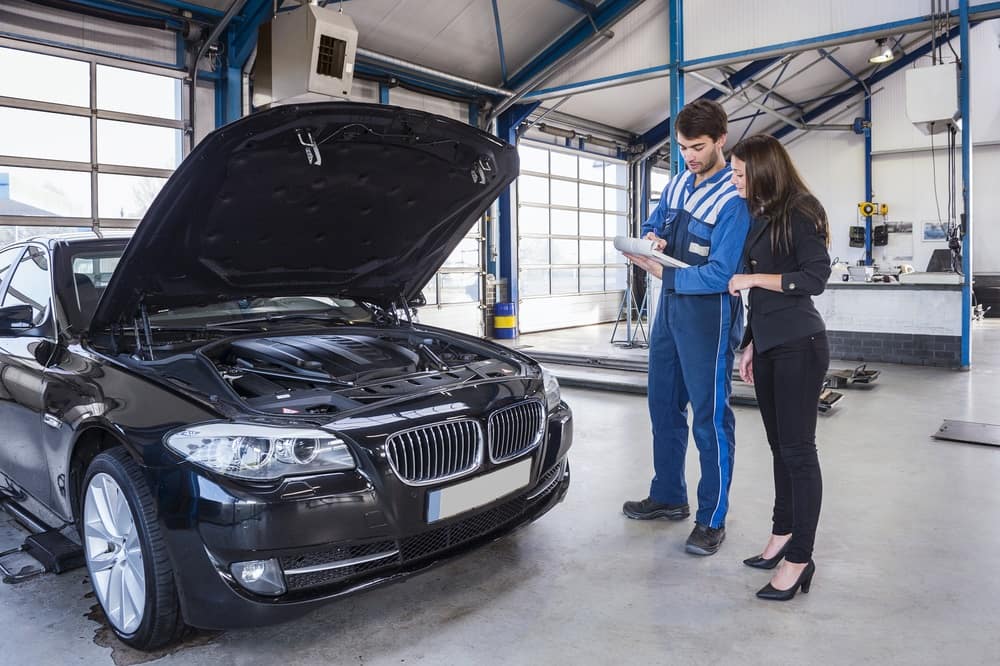Understanding the Role of a Car Gearbox
Your car’s gearbox is the heart of its transmission system, responsible for transferring engine power to the wheels efficiently. It determines how smoothly your car accelerates, how much fuel it consumes, and how responsive it feels on the road. Without a properly functioning gearbox, even a powerful engine can’t deliver its best performance. There are two main types of gearboxes—manual and automatic—and each has its own unique components and repair requirements. Manual gearboxes rely on a clutch and gear stick, while automatics use complex hydraulic systems to shift gears on their own. Understanding the differences between the two helps car owners recognize issues faster. Early detection and proper maintenance can prevent long-term damage, making regular inspection an essential part of responsible vehicle ownership.
Common Signs Your Car Gearbox Needs Repair
Your vehicle will often give you warning signs before a major gearbox failure occurs. One of the most common symptoms is grinding or shaking when you shift gears, especially in manual vehicles. Automatic transmissions may instead show signs like hesitation, delayed engagement, or slipping between gears. Another red flag is a burning smell caused by overheated or leaking transmission fluid, which should be addressed immediately. Unusual noises such as whining, clunking, or humming can indicate worn-out gears or bearings. If your dashboard warning lights come on—especially the check engine or transmission indicator—it’s a signal that something inside your gearbox may not be working properly. Ignoring these symptoms can lead to costlier repairs or even total gearbox failure. Detecting these signs early and consulting a professional for inspection can make a significant difference in repair costs and vehicle lifespan.
Major Causes of Gearbox Problems
Gearbox problems don’t happen overnight; they develop over time due to various mechanical and environmental factors. One of the biggest culprits is lack of maintenance, especially neglecting to check or change gearbox oil. Without proper lubrication, friction between moving parts increases, causing wear and tear. Overheating also plays a major role—it breaks down transmission fluid, leading to internal damage. Aggressive driving habits, such as frequent hard shifting or towing heavy loads, strain the gearbox beyond its capacity. Modern automatic transmissions may suffer from sensor or electronic control failures, making diagnosis more complex. In manual cars, a worn clutch or damaged synchronizers often contributes to shifting issues. When small problems go unnoticed, they escalate into major mechanical breakdowns, underlining the importance of regular servicing and proper driving practices.
Step-by-Step Overview of the Car Gearbox Repair Process
Repairing a car gearbox is a meticulous and technical process that requires professional skill. The first step involves diagnostic testing to identify the root cause of the issue using advanced diagnostic tools. Mechanics then drain the gearbox oil to inspect it for contamination, burnt odor, or metal shavings. This step helps determine whether internal components have sustained damage. Afterward, the gearbox is carefully dismantled so that gears, shafts, and bearings can be examined for wear or fractures. Damaged or worn parts are replaced with high-quality components that meet manufacturer standards. Once the repairs are complete, fresh gearbox oil is added, and the transmission is tested under different driving conditions. The post-repair inspection ensures that all gears shift smoothly, the clutch engages properly, and no abnormal noises remain.
Typical gearbox repair tasks include:
- Diagnosing electronic or mechanical faults
- Inspecting and replacing worn bearings and seals
- Cleaning and reassembling gearbox components
- Refilling gearbox oil with the correct specification
- Conducting a test drive to verify performance
Each of these steps ensures the gearbox operates efficiently and extends the overall lifespan of your vehicle.
When to Repair vs. Replace Your Gearbox
Knowing when to repair or replace your gearbox depends on several factors. The severity of the damage, vehicle age, and overall repair cost all influence your decision. Minor issues, such as fluid leaks or worn seals, can be addressed through repairs without replacing the entire unit. However, if major internal components like the main shaft or planetary gears are severely damaged, a replacement may be more cost-effective. In older vehicles, the cost of extensive repairs might outweigh the car’s value, making a rebuilt gearbox a practical solution. Mechanics often recommend gearbox replacement when repeated repairs fail to fix recurring problems. A professional gearbox specialist can help evaluate whether a full rebuild or replacement is the best option for long-term reliability. Choosing wisely can save you money and keep your car performing at its best for years to come.
The Importance of Choosing a Skilled Gearbox Specialist
Gearbox repair is a complex job that demands both technical expertise and experience. Unlike general mechanical repairs, gearbox work involves precision measurements and specialized tools. A skilled gearbox specialist understands the intricate details of both manual and automatic systems, ensuring repairs meet manufacturer standards. When searching for a trusted repair shop, look for certifications, diagnostic equipment, and positive customer feedback. It’s also important to ask about warranties on parts and labor, as reputable workshops usually guarantee their work. Using original equipment manufacturer (OEM) parts rather than low-cost substitutes ensures better performance and longer durability. A reliable mechanic will always provide a transparent estimate, explain the repair process, and keep you updated on progress. Investing in expert service not only improves your vehicle’s reliability but also protects you from repeated breakdowns.
Preventive Maintenance Tips for a Healthy Gearbox
Maintaining your gearbox doesn’t just save money—it extends the life of your vehicle and ensures smoother driving. Regularly checking gearbox fluid levels is one of the easiest yet most effective steps. If the fluid appears dark or burnt, it’s time for a replacement. Always use the type of oil recommended by your car manufacturer to prevent compatibility issues. Developing good driving habits also helps, such as avoiding hard gear shifts or overloading your vehicle. Keep an eye out for leaks under your car and address them immediately before they lead to major damage. Schedule gearbox inspections during routine servicing to catch small issues early. Following a maintenance schedule, typically every 30,000 to 60,000 miles depending on vehicle type, can greatly reduce the risk of sudden gearbox failure.
Smart maintenance habits include:
- Checking and changing gearbox oil regularly
- Avoiding aggressive driving or towing beyond limits
- Getting routine gearbox inspections from professionals
- Fixing leaks or minor issues immediately
- Ensuring proper cooling system function to prevent overheating
Practicing these habits can keep your gearbox in excellent condition and help your car run smoothly for years.
Cost Factors Involved in Car Gearbox Repair
The cost of gearbox repair varies widely depending on your vehicle type, the extent of damage, and labor rates in your area. Manual gearbox repairs tend to be less expensive than automatic ones because they have fewer complex components. However, replacing damaged gears or bearings can still add up. Labor costs are a major part of the total, as gearbox removal and reinstallation are labor-intensive. The price also depends on whether new, used, or rebuilt parts are used for replacement. Some repairs may be covered by your car’s warranty or extended service plan, reducing out-of-pocket costs. To avoid overcharging, always ask for a detailed breakdown of costs and request quotes from multiple repair shops. Preventive maintenance, while inexpensive, can save you hundreds or even thousands of dollars compared to major gearbox overhauls.
FAQs About Car Gearbox Repair
1. How long does a gearbox repair usually take?
A typical gearbox repair can take anywhere from one to three days, depending on the severity of the damage and parts availability.
2. Can I drive with a faulty gearbox?
Driving with a damaged gearbox is not recommended, as it can worsen the problem and lead to total transmission failure.
3. What’s the difference between gearbox oil and transmission fluid?
Both serve lubrication purposes, but gearbox oil is used in manual transmissions, while automatic transmissions use hydraulic transmission fluid.
4. How do I know if my gearbox needs repair or replacement?
Persistent shifting issues, burnt smells, and metal shavings in the oil often indicate serious problems that require professional evaluation.
5. Is it safe to use second-hand gearboxes or refurbished parts?
Used or rebuilt gearboxes can be reliable if sourced from reputable suppliers and properly tested before installation.
6. How often should I have my gearbox inspected?
Experts recommend inspecting your gearbox every 30,000 miles or during regular vehicle maintenance to detect early issues.
Takeaway
A well-maintained gearbox ensures smoother rides, better fuel efficiency, and fewer mechanical surprises. Paying attention to early warning signs and seeking professional help can save you from major expenses and inconvenience. Regular maintenance, high-quality repairs, and responsible driving habits are the foundation of long-term gearbox health. Whether it’s a small repair or a complete overhaul, choosing a trusted specialist is key to keeping your vehicle performing at its best. Car gearbox repair may sound complex, but with the right knowledge and care, your transmission can stay reliable for years to come.










